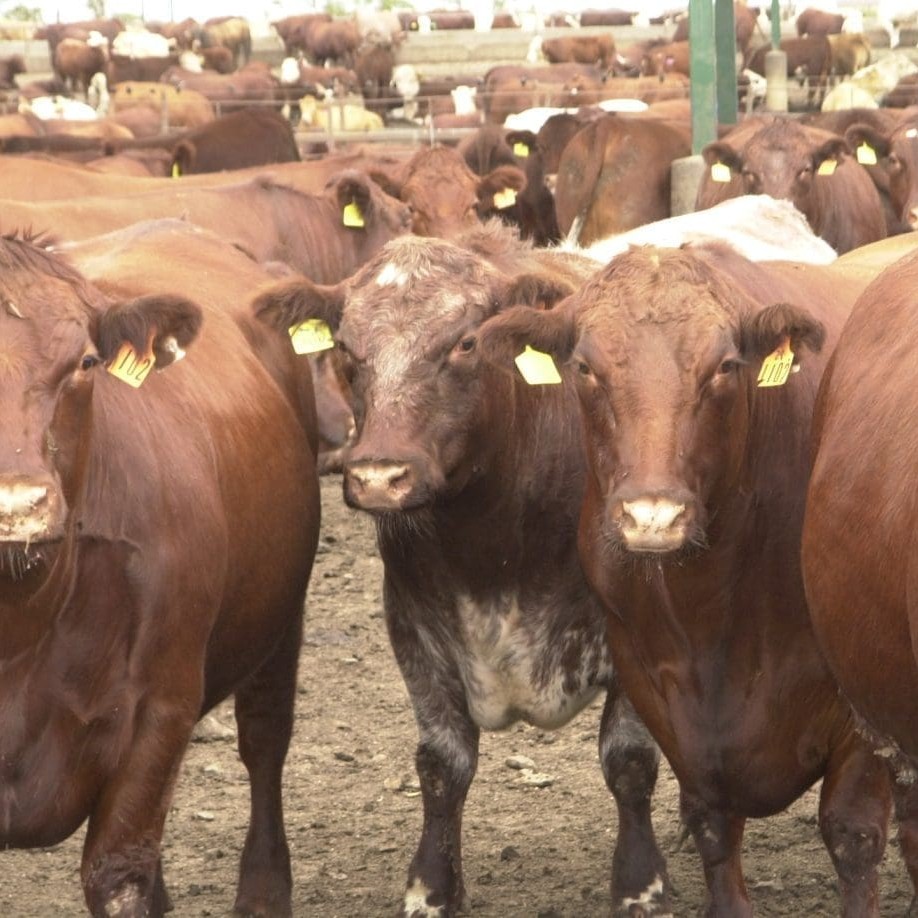Story updated 11am, Friday February 22
 There was a ten percent rise in cattle numbers on feed across Australia by December 30, the latest feedlot industry quarterly survey released yesterday shows.
There was a ten percent rise in cattle numbers on feed across Australia by December 30, the latest feedlot industry quarterly survey released yesterday shows.
Nationally, cattle on feed reached 792,000 by year’s end, representing a healthy 75,000 head rise on numbers from the September quarter, but still only getting back to the numbers seen this time a year earlier.
It was no surprise that numbers over the final quarter of last year were growing, with widespread anecdotal evidence of bigger feedlot intakes during October and November as seasonal conditions across large areas of NSW and Queensland deteriorated.
Queensland feedlot numbers rose by 26,000 between September and December quarters, yesterday’s report showed, however the trend was inconsistent across different feedlot size categories.
Lots with capacities above 10,000 head, for example, declined in numbers by 11,000 head over the quarter, while there was a jump of close to 40,000 head in numbers for feedlots 1000 to 10,000 head in size.
This clearly reflected the big spike in custom feeding activity in Queensland seen during the final three months of the year, as conditions deteriorated.
New South Wales feedlots also lodged a solid 25,000 head increase in numbers to December 30, although the figure is still 20,000 behind where it was a year earlier.
Southern states also followed the expansion trend, with Victoria lifting 3000 head since September to 39,600; South Australia showing a spectacular seasonal rise of 16,000 head to 25,000 head; and Western Australia improving 4000 head to 17,800.
The latest survey result continues a pattern evident in the graph accessible at the bottom of this page, which shows that national numbers on feed have sat between a relativly narrow band between 700,000 and 800,000 head for the past three years.
Australian Lot Feeders’ Association president Don Mackay said the December quarter survey outcome was predominantly due to a decline in feeder cattle prices.
“Indicative national feeder cattle (yearling steers C3 330-400kg lwt) prices averaged 188¢/kg during the December quarter, back 10 percent from the corresponding period last year,” he said.
Rapidly drying seasonal conditions also drove more numbers into feedlots, and a lack of competition in the marketplace for grower cattle from grass finishers, pushed feeder cattle prices lower.
“While Darling Downs barley, sorghum and wheat prices were significantly higher year on year (+29pc, +22pc and +25pc respectively), they were similar to the September quarter (averaging only 5pc higher) and hence did not impede cattle purchase decisions,” he said.
Beef Central asked Mr Mackay for his opinion about price outlook for grainfed cattle heading into March, given continued subdued export demand out of Japan and Korea, and an additional 75,000 cattle placed on feed during the December quarter – some of which would start to close-out soon after 100-day programs.
He agreed that the grainfed cattle market could come under some pressure. Offsetting that, however, was the fact that traditionally, grassfed slaughter numbers did not peak until a little later in the year, which might help the market ‘absorb’ any lift in grainfed turnoff during March and April.
“Japan, in particular, is really struggling as a market, though,” he said.
“But while the change in export access for US grainfed suppliers represents a significant challenge for Australia, it may not be as significant as some expect. The big change in demand in Japan could be seen in some of the offal items, like tongue, for example, rather than muscle meat.”
“The average beef producer does not think about items like tongues that much, but they are worth a lot of money in a market like Japan that prizes them.”
Hide prices had also stayed reasonably buoyant and in fact risen a little recently, again on the back of lower slaughter numbers out of the US.
Meat & Livestock Australia’s market information manager Tim McRae said grainfed exports to Australia’s major markets for the December quarter were mixed, with a 12pc year-on-year decline to Japan and a 15pc rise in Korea.
“Total grainfed beef exports into Japan for the 2012 year reached at 124,100t, a fall of 12pc compared to 2011 while exports into Korea were 31,332t, down 19pc,” Mr McRae said.
The declines were offset slightly by increases in grainfed beef exports into Europe (+46pc), South East Asia (+88pc) and the Middle East (+40pc), albeit these were coming from a much lower base.
Total Australian grainfed beef exports for 2012 were 190,200t, a fall of 9pc compared to 2011.
“The overall results reflected continuing challenges associated with our currency strength, weak consumer demand in export markets and increasing US competition,” Mr McRae said.
